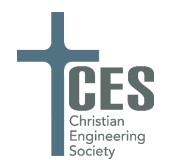Document Type
Paper
Abstract
This paper introduces the technical accomplishments and the driving theological motivations of those who engineered the Gothic cathedrals. It ultimately derives lessons for Christian engineers, their processes, and their products. These exceptional feats of engineering, enabled by elements such as pointed arches, ribbed vaulting, and flying buttresses initiated a new style of building in the medieval equivalent of the last century’s space race. These cathedrals maximized height and light in the house of God, the true meeting place of Heaven and earth. Descriptors like “House of God” and “Gate of Heaven,” sung in the dedication liturgies, echo the patriarch Jacob after waking from his dream of a ladder descending from Heaven. Serving a largely illiterate population, the cathedrals can be viewed as scripture written in stone sculpture and stained glass due to their abundant depiction of scenes from the whole of salvation history, enabled by structural and constructional innovations. Driven by a theological vision in a deeply integrated worldview, the builders relied on geometric and heuristic methods, despite their lack of mathematical and scientific knowledge, to achieve beautiful structures that have stood for centuries, glorifying God and serving His people. Today, for Christian engineers seeking to fulfill these ends, the cathedrals can serve as an inspiration to innovate and a reminder that beauty is an objective and indispensable aim.
Creative Commons License

This work is licensed under a Creative Commons Attribution-Noncommercial-No Derivative Works 4.0 License.
Copyright
© 2024 Justin M. Greenly. All rights reserved.
Domus Dei et Porta Caeli: House of God and Gate of Heaven
This paper introduces the technical accomplishments and the driving theological motivations of those who engineered the Gothic cathedrals. It ultimately derives lessons for Christian engineers, their processes, and their products. These exceptional feats of engineering, enabled by elements such as pointed arches, ribbed vaulting, and flying buttresses initiated a new style of building in the medieval equivalent of the last century’s space race. These cathedrals maximized height and light in the house of God, the true meeting place of Heaven and earth. Descriptors like “House of God” and “Gate of Heaven,” sung in the dedication liturgies, echo the patriarch Jacob after waking from his dream of a ladder descending from Heaven. Serving a largely illiterate population, the cathedrals can be viewed as scripture written in stone sculpture and stained glass due to their abundant depiction of scenes from the whole of salvation history, enabled by structural and constructional innovations. Driven by a theological vision in a deeply integrated worldview, the builders relied on geometric and heuristic methods, despite their lack of mathematical and scientific knowledge, to achieve beautiful structures that have stood for centuries, glorifying God and serving His people. Today, for Christian engineers seeking to fulfill these ends, the cathedrals can serve as an inspiration to innovate and a reminder that beauty is an objective and indispensable aim.

